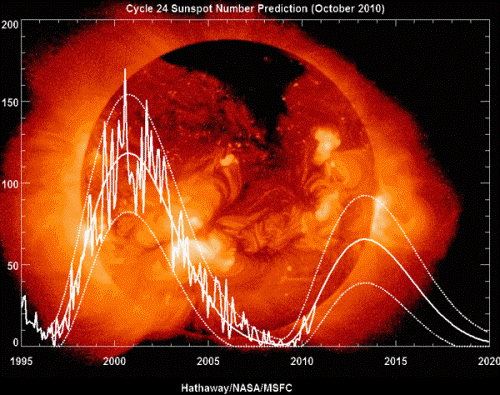
Mercury, innermost planet of our Solar system (zodiac-astrology-horoscopes.com)
Sunday night, May 25, you may want to take a look at the planet Mercury. It’s the best night all year for viewing our feisty little sunmost neighbor from Earth’s northern hemisphere.
On this date, Mercury will reach its elongation—the farthest point it travels to the east of the Sun. It will set over an hour behind the Sun and will appear prominent (mag -1.9) on the western horizon for a brief time shortly after sunset. Because the planet never strays very far from the horizon after the Sun has set, you’ll need a clear western horizon for a good view of it.
Under optimal conditions, Mercury is easy to see with the naked eye. An Assyrian asronomer around the 14th century BC was the first to report it. Galileo was the first to sight Mercury telescopically in the early 17th century, but his instrumant was not strong enoigh to detect the small planet’s phases.
On Sunday, “the exact time interval between sunset and Mercury’s setting will vary depending upon your geographic latitude,” says astronomer Dominic Ford.
At the moment of greatest elongation, Mercury will lie in the constellation Taurus, 22°40′ from the Sun. The planet’s declination will be +25°24’58”. From latitudes south of 44°S, it will be unobservable.
The chart above shows planetary data for the 25th. NASA’s Jet Propulsion Laboratory created the DE405 ephemeris, on which this information is based, in May 1997 to support spacecraft missions. It covers JED 2305424.50 (1599 DEC 09) to JED 2525008.50 (2201 FEB 20).
In 24 days (Sunday, June 14, 2014, at 16:23 MDT), Mercury will reach its farthest point from the Sun (aphelion) in the constellation Orion.

